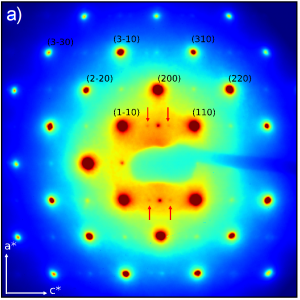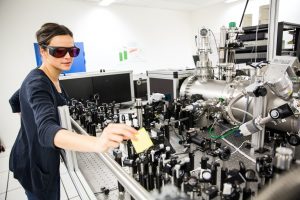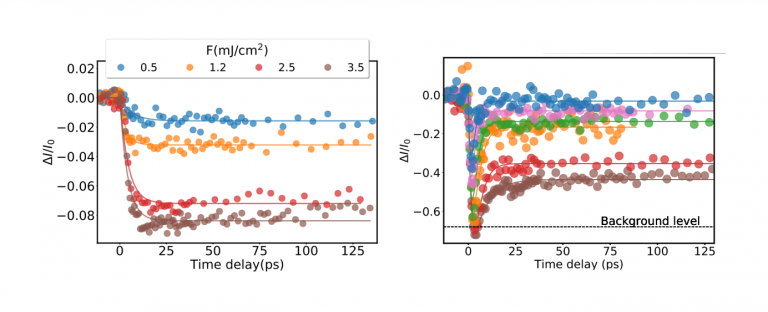Utrafast Electron Diffraction



Our group has built an ultrafast electron diffraction experiment, allowing us to perform pump-probe experiments using a 50-100 keV electron bunch to probe the lattice of samples undergoing an ultrafast photoexcitation. The setup has a typical temporal resolution of 300 fs at best. This activity is relatively new and we have obtained results in model systems such as silicon. Recently, we have started to tackle more ambitious problems such as the study of the Charge Density Wave (CDW) phase transitions in more complex systems such as materials from the RTe3 family (R is a rare earth). We have been able to monitor the evolution of the phase transition on picosecond time scales. The results show that the CDW is destroyed in less than 1 ps following photoexcitation. More interesting, we find that the CDW state reforms with a time scale which depends on the temperature of the lattice. The recovery time of the CDW becomes longer as the lattice temperature approaches the critical temperature Tc, an effect reminiscent of “critical slowing down” in thermodynamic phase transitions.

Related publications:
“Time-resolved structural dynamics of the out-of-equilibrium charge density wave phase transition in GdTe3”, I. Gonzalez-Vallejo et al., to be submitted
“Observation of large multiple scattering effects in ultrafast electron diffraction on single crystal silicon”; I Gonzalez Vallejo, G. Gallé, B. Arnaud, S. A. Scott, M. G. Lagally, D. Boschetto, P.-E. Coulon, G. Rizza, F. Houdellier, D. Le Bolloc’h and J. Faure, Phys. Rev. B 97, 054302 (2018)
Contact: Jérôme Faure
People involved: Davide Boschetto, Emmanuel Peronne


